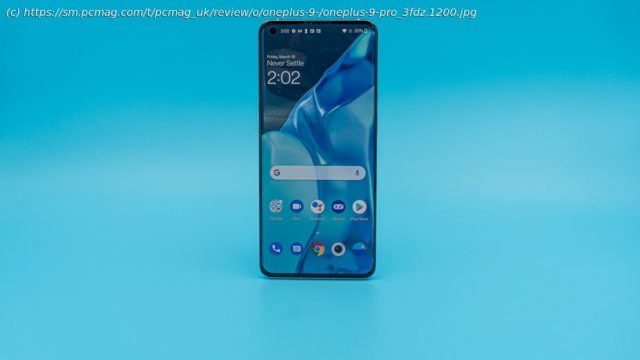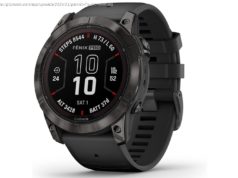A stellar T-Mobile flagship with a phenomenal camera
The OnePlus 9 Pro smartphone (starting at $969.99) delivers a streamlined flagship experience to T-Mobile subscribers, finally catching up to its competitors. The phone itself is light in the hand, and the user experience is weightless as well. The cameras take knockout photos in pretty much all conditions and the integrated fast charging is the best we’ve seen. The Galaxy S21 Ultra scores a bit better in our battery and wireless radio testing, it works with Samsung’s excellent S Pen stylus, and its camera offers killer optical zoom, so it just edges out the 9 Pro to be our Editors’ Choice among flagship smartphones. Still, the OnePlus 9 Pro is outstanding. If you’re on T-Mobile and want a top-notch, loaded phone that makes your heart sing, you’re now spoiled for choice. The OnePlus Promise Is Finally Realized OnePlus was once a company that made a single great phone at a time. Now it has a full line of phones at T-Mobile (and providers like Google Fi, Metro, or Mint Mobile, which use T-Mobile’s networks): the $969.99 OnePlus 9 Pro, the $729.99 OnePlus 9, the $299.99 OnePlus Nord N10, and the $179.99 OnePlus Nord N100. They all share the OnePlus philosophy, which means speedy, elegant software and a streamlined physical design. Cameras have always been the one place OnePlus tended to fall behind Samsung and Apple, so OnePlus made a deal with Hasselblad for color tuning and bought a new sensor from Sony. As a result, the 9 Pro’s camera is mostly on par with the latest from Samsung, only slightly short only on optical zoom. If you aren’t a T-Mobile subscriber, read no further. The 9 Pro is only designed to work well with that carrier. But if you’re on T-Mobile or an aforementioned sub-carrier, you will find quite a lot to like here, especially if you covet the Galaxy S21 Ultra but think it’s just a bit too hefty. The OnePlus 9 offers similar overall performance to the 9 Pro but steps down a bit on screen, camera, and radio quality, and it doesn’t integrate super-fast wireless charging. If you don’t mind those downgrades, you can save $240 and get an even smaller and lighter phone. See our review of the OnePlus 9 for all the details. Light, Sleek Design The 9 Pro’s base model has 8GB of RAM and 128GB of storage. The 12GB/256GB model costs an additional $100. There is no memory card slot. The phone is perfectly sized, measuring 6.42 by 2.89 by 0.34 inches (HWD) and weighing 6.9 ounces. That’s a little wider than the 2.8 inches we use as the cutoff width measurement for small phones, but it’s noticeably smaller and lighter than the Galaxy S21 Ultra, and narrower than the OnePlus 8 Pro. Of the three, the 9 Pro is the easiest to use with a single hand. The OnePlus 9 Pro comes in green or silver. The design, very in tune with OnePlus’s “burdenless design” philosophy, is slim and elegant. The phone’s body is rounded, with the traditional OnePlus mute switch on the left side and the Hasselblad-branded camera module on the back. The camera doesn’t stick out nearly as much as recent Samsung camera bumps do (because it doesn’t have a giant periscopic zoom lens in it). The front-facing camera is a hole-punch on the upper left corner, just like on the 8 Pro. The phone has an IP68 rating for water and dust resistance, and comes in two colors. If you’re not going to put your phone in a case, we like the matte pine green better than the mirrored silver “morning mist” glass back, which has a greasy-fingerprint problem. Our review unit came with a black carbon-fiber case that made that issue moot. (There’s a third, black phone, but OnePlus tells us it won’t be sold in the US.) The mirrored back of the silver case is a fingerprint magnet. Unlike the Galaxy S21 Ultra and recent iPhones, your OnePlus phone comes with a cable and a 65W charger. Luxury! There’s a reason: OnePlus uses proprietary USB-C chargers. Though the phone will charge from any USB-C source, it’ll only achieve its highest charging speeds with the included charger. There’s no headphone jack, and no headphone adapter included in the box. At this writing, OnePlus’s own (very good) USB-C headphones are out of stock. You’ll have to go with a third-party adapter or third-party wireless USB-C earphones. You can also go wireless. OnePlus Buds and even less expensive Buds Z both offer customizable tap functions that only work with OnePlus phones. If you’re looking at other wireless earbuds, try to find a pair that supports Qualcomm’s aptX HD codec, since it’s the highest-resolution codec available on the 9 series. As for the onboard speakers, the audio quality is excellent. Dual stereo speakers deliver audio with a peak volume of 98dB and a surprising bit of mid-bass. For voice calls, which have a maximum volume of 81dB, the phone supports the best codec T-Mobile can handle, HD voice with EVS. A Bright, Yet Battery-Saving Display The bright and beautiful 6.7-inch,525ppi,3,216-by-1,440-pixel screen can be dialed back to 1080p in the phone’s settings if you want to conserve battery life. The display uses a relatively new technology called low-temperature polycrystalline oxide (LTPO) that reduces power consumption and gives phone manufacturers more control over refresh rates. It was previously seen in the Samsung Galaxy Note 20 Ultra and the Galaxy S21 series. It’s worth noting that only the 9 Pro, not the 9, offers this screen technology. The LTPO display helps save power. This is a top-of-the-line OLED display with a bonus: It’s very visible in direct sunlight. A screen protector is preinstalled; we didn’t remove it from our test unit. According to DisplayMate Labs tests, the 9 Pro’s display set to Auto Brightness mode beats the 8 Pro, the Galaxy S20 series, and the latest iPhones in ambient light, but not the Galaxy Note 20 Ultra. The 9 Pro also improves the maximum color gamut in its vivid display mode, which helps it maintain color saturation in outdoor lighting. Besides in brightness and color, the 9 Pro’s display isn’t easily distinguishable from other recent top-of-the-line OLED panels. The real news is power optimization, as the LTPO panel dynamically—and imperceptibly—changes its refresh rate from 120Hz all the way down to 1Hz to save energy. Check out our in-depth exclusive for more on the display. Impressive Speed and Ease of Use OnePlus phones are always fast. The 9 and 9 Pro, along with the Galaxy S21 series, are the only US phones with Qualcomm’s Snapdragon 888 chipset. (There are others in the world, but they aren’t sold here.) The two OnePlus phones scored a bit better than the Galaxy S21 Ultra on Geekbench, with single-core scores around 1125 and multi-core scores around 3700. That’s a 24% increase on single-core results and a 12% increase on multi-core results over the OnePlus 8 Pro. None of these phones can surpass the iPhone 12, though, which scored 1596 SC and 4049 MC with its Apple A14 processor. The Snapdragon 888 provides a lift in graphics performance, too. On the GFXBench Car Chase offscreen benchmark, the 9 Pro scored around 70fps, with 37fps onscreen in WQHD mode and 58fps onscreen in HD mode. That’s a major jump up from the 8 Pro, which scored 51fps offscreen and either 26 or 45fps onscreen depending on screen resolution.






